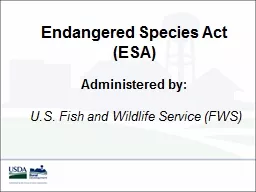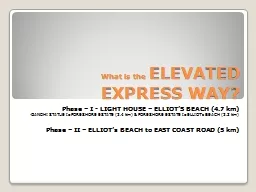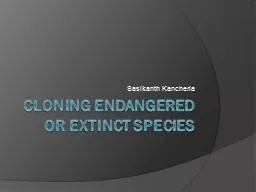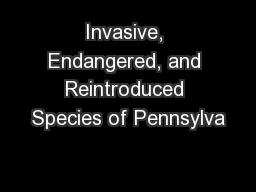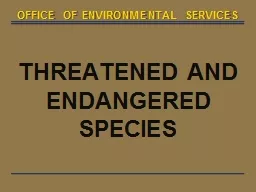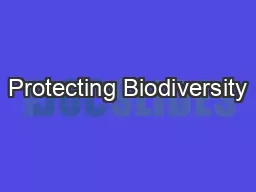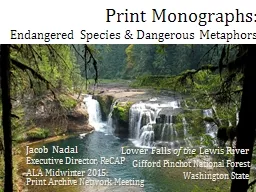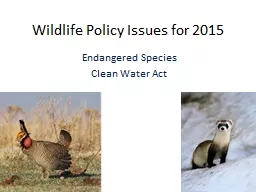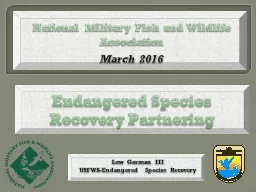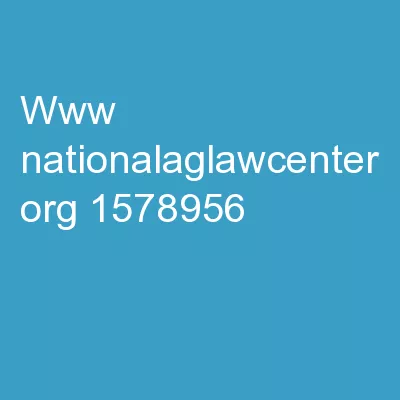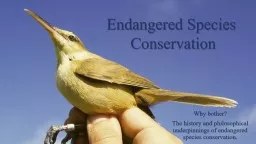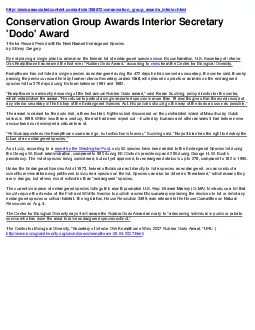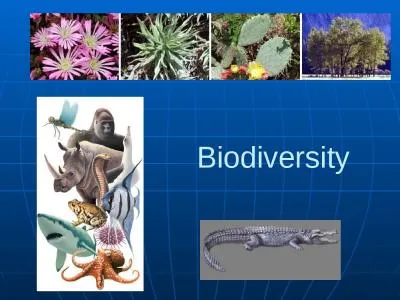PPT-Endangered Species Act
Author : luanne-stotts | Published Date : 2015-10-15
ESA Administered by US Fish and Wildlife Service FWS Protected Resources Listed endangered and threatened flora and fauna Designated critical habitat Candidate
Presentation Embed Code
Download Presentation
Download Presentation The PPT/PDF document "Endangered Species Act" is the property of its rightful owner. Permission is granted to download and print the materials on this website for personal, non-commercial use only, and to display it on your personal computer provided you do not modify the materials and that you retain all copyright notices contained in the materials. By downloading content from our website, you accept the terms of this agreement.
Endangered Species Act: Transcript
Download Rules Of Document
"Endangered Species Act"The content belongs to its owner. You may download and print it for personal use, without modification, and keep all copyright notices. By downloading, you agree to these terms.
Related Documents

